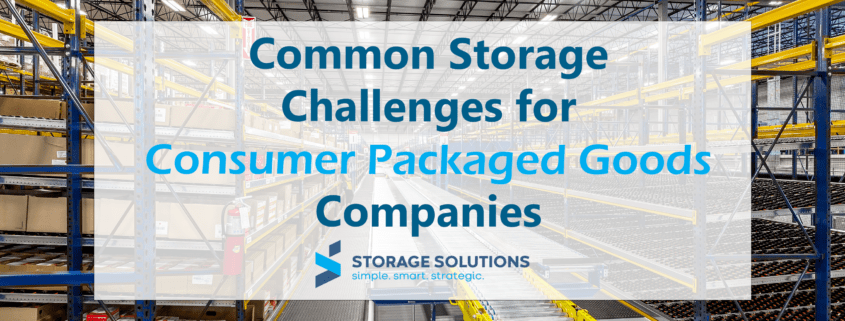Common Consumer Packaged Goods Company Storage Challenges
Consumer packaged goods companies represent one of the largest sectors of the supply chain industry. With well-recognized brands like Coca-Cola, Unilever, and Proctor & Gamble, consumers typically encounter CPG products on a near-daily basis, making their journey along the supply chain a critical area of focus for retailers and wholesalers alike.
According to recent research from Infiniti Research, the CPG industry is reacting to “rising raw material costs, stalled demand, declining profits, skyrocketing retail pricing pressures, and the never-ending shift in consumer preferences.” While these challenges have been present in the industry for some time, the degree to which they affect these companies has rarely been so apparent.
As a result of the e-commerce boom coupled with the challenges caused by the COVID-19 pandemic, consumer behavior shifted in a way that sawto drive an increase of online orders and less dependency on the traditional manufacturer-wholesale distributor-retail supply chain path. In short, suddenly consumers were expecting a bottle of shampoo to be delivered to their home instead of the consumer going into a retail store to purchase it.
In particular, the dynamic shift of consumer preferences is causing driving CPG storage and fulfillment centers to look at the design and layout of their facilities and examine if changes need to occur. After all, if a facility was designed and built for a specific routine of consumer behavior, then and that behavior changes, then it would only be logical that the facility isn’t operating as efficiently as it should could be.
Most CPG facilities are designed to house some level of dense storage. And, if they are laid out well, they will use a combination of drive-in/drive-thru racking along with pallet runners or pallet flow for their fast-moving items, while slower-moving items are stored on double-deep or other selective racking. CPG facilities are likely to use first-in, first-out (FIFO) inventory management methods. In some cases, they will need to account for first-expired, first-out (FEFO) inventory to account for customers who may need a product a certain number of days before expiration.
Storage and fulfillment centers in the CPG industry utilize many of the same storage types and fulfillment processes as those in the food and beverage industry. However, CPG facilities are typically operated directly by manufacturers and not necessarily distributors. This relationship will generally indicate the facility stores fewer SKUs and has higher on-hand storage requirements than your average food and beverage storage facility.
In general, CPG companies are just like “everyone else” when it comes to accounting for a higher degree of SKU proliferation. Ultimately, most companies will have some level of discord between the forecasts that a marketing or sales department may have for a particular product and the actual demand for that product, which can cause a ripple effect in the storage and fulfillment process.
For example, a company comes out with a new scent of shampoo, one that the marketing department forecasts as having a high level of demand. However, no one is buying the product. Now, the CPG company has extra inventory, and they have lost a portion of their storage capacity – designed for fast-moving products – to a slow-moving product. While there will always be some disconnect between forecasts and sales, the discrepancy is felt to a higher degree when you factor in SKU proliferation.
How can you ultimately solve for SKU proliferation before it exists? Design for flexibility. One way to design for flexibility is to have different storage locations from a size and capacity standpoint.
Another way to facilitate flexibility is to implement warehouse technology solutions. By having a modern warehouse management system or warehouse execution system, you can easily identify where you have under-utilized storage locations or honeycombing. For example, if your facility has a 20-deep pallet location that only has had three pallets in it for the past few weeks, you should know about it. Using technology can keep your operations as optimized as possible while dealing with all the other curveballs that arise with manufacturers.
Where to Get Started?
The best strategies for configuring a CPG fulfillment center always start with the right design. There will be instances when a facility will have to reconfigure its operations or layout to meet new challenges. But, if you’re utilizing a 5-deep, 5-high storage system housing 12 different SKUs, you’re not making use of your 25 storage locations already in place.
At that point, that’s when you give us a call. We have decades of experience in designing flexible, long-term solutions to meet changing business needs. Rather than continually operating in an inefficient environment, we work with you to build a business case with an ROI attached, to design a new facility, or retrofit your current configuration. Let’s explore your options today!



